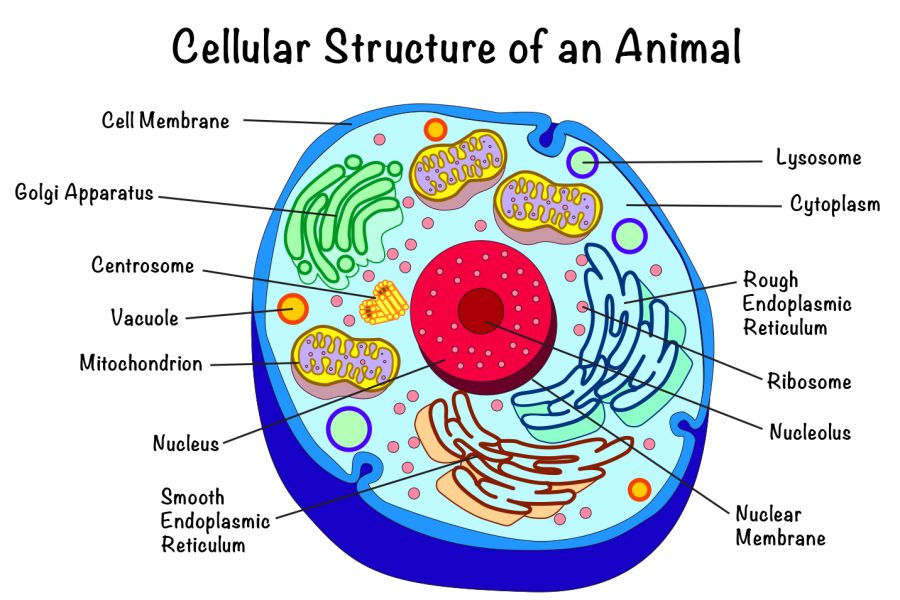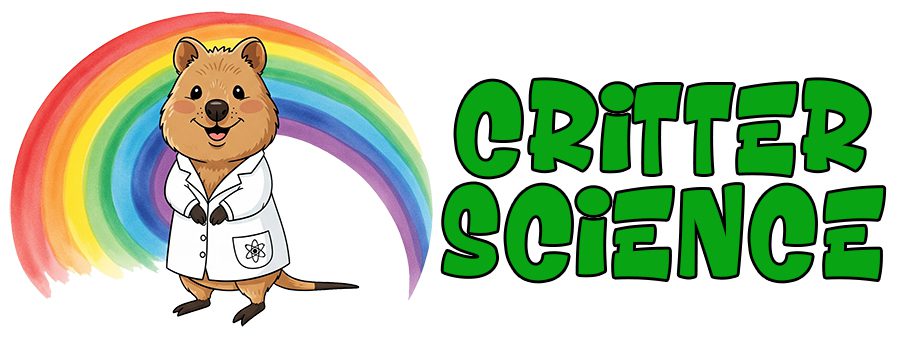- Zoology
- Daily Critter Facts
- For Teachers
- Study Guides
- Diseases & Parasites
- Contact



Animal cells are the basic structural and functional components of animal organs & tissues. They are eukaryotic cells. This means that, unlike prokaryotic cells, animal cells typically have membrane-bound organelles that are suspended in the cytoplasm which is enveloped by a plasma membrane. Robert Hooke, the English natural philosopher, in circa 17th century, is touted as being the first person to describe microscopic pores, in which he later coined cells.
Seeing as most animals are considered multicellular organisms, their bodies can have up to trillions of cells. A group of cells that perform specific functions are termed tissue. There are various cell types that take on different tasks. For example, there are blood cells, fat cells, muscle cells, nerve cells, sex cells, skin cells, and stem cells. Blood cells, being the cellular components of the blood are comprised of red and white cells. Fat cells, aka adipocytes are the particular cells of the adipose tissue. Muscular tissue is made up of myocytes, or muscle cells. The neurons, or nerve cells make up the nervous system. Sex cells are involved with reproduction. Skin cells make up the epithelial tissues. Finally, stem cells are known to be totipotent (able to develop into any living animal cell).
Cells are amazing. For instance, they can divide via a cleavage furrow to separate daughter cells. Another fun fact is that animal cells respire aerobically. They need oxygen since it provides the final electron acceptor in the redox reactions of cell respiration. And not all animals cells are equal. an example of this is that some animal cells lack a nucleus. The cells that lack a nucleus have more room for hemoglobin.
Cellular Structure Definitions
Cell Membrane – The cell membrane, aka the plasma membrane, is located in all cells and divides the interior of the cell from the outside environment. The cell membrane consists of a lipid bilayer that is semipermeable. The cell membrane also regulates the transportation of materials entering and leaving the cell.
Golgi Apparatus – A group of vesicles as well as folded membranes inside the cytoplasm of most eukaryotic cells that is involved in secretion & intracellular transportation.
Centrosome – An organelle close to the nucleus of a cell which houses the centrioles (in animal cells) and from which the spindle fibers develop during cell division.
Vacuole – A gap or vesicle inside the cytoplasm of a cell, that is enclosed by a membrane and usually holding fluid.
Mitochondrion – An organelle located in large amounts in most cell types, in which the biochemical processes of respiration and energy production happen. It has a double membrane, the inner layer being folded inward to form layers (called cristae).
Nucleus – The middle and most integral part of a cell that forms the basis for its activity and growth.
Smooth Endoplasmic Reticulum – Lacks ribosomes yet helps synthesize and concentrate various substances required by the cell.
Lysosome – A membrane-bound cell organelle which houses digestive enzymes. They are involved with a variety of cell processes. They also break down excess or worn-down cell parts. Lysosomes might be used to terminate invading bacteria and viruses.
Cytoplasm – This is the gelatinous fluid that fills the inner part of a cell. It is comprised of water, salts, and a variety of organic molecules.
Rough Endoplasmic Reticulum – A series of connected and flattened sacs that are part of a continuous membrane organelle insdie the cytoplasm of a eukaryotic cell, that plays a pivotal role in the synthesis of proteins.
Ribosome – The minute particle made of RNA and associated proteins located in large numbers in the cytoplasm of living cells. They bind messenger RNA & also transfer RNA to synthesize polypeptides and proteins.
Nucleolus – The small, thick, spherical structure inside the nucleus of a cell during interphase.
Nuclear Membrane – The double layer that encases the cell’s nucleus, where the chromosomes are housed. The nuclear membrane is meant to separate the chromosomes from the cell’s cytoplasm and other contents.
In Closing
The animal cell represents a marvel of biological engineering, serving as the fundamental building block for all creatures in the animal kingdom. Its intricate organization, featuring a nucleus containing genetic material and a variety of specialized organelles suspended within the cytoplasm, allows for the complex processes necessary for life. From energy production in mitochondria to protein synthesis via ribosomes and waste disposal by lysosomes, each component works in concert, enclosed by a flexible plasma membrane that controls the passage of substances and facilitates communication with the external environment.
Ultimately, the study of animal cells is crucial not only for understanding the basic mechanics of life but also for grasping the complexities of development, physiology, and disease. The incredible diversity seen in specialized cells, such as neurons, muscle fibers, and blood cells, highlights their adaptability and essential role in forming tissues, organs, and entire organisms. Continued exploration into the inner workings of these microscopic units promises further breakthroughs in medicine, biotechnology, and our overall comprehension of the vibrant tapestry of animal life on Earth.
